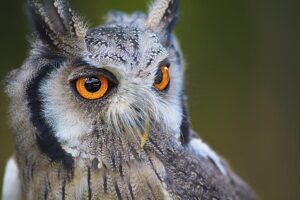12 tips on time management
Your life as a student goes beyond academics. Aside from school, you must schedule time for family, relationships, extracurricular activities, and after-school activities. You must also relax and make time for friends and recreation.
Students must find out how to strike a balance between their coursework and extracurricular interests. In this manner, you won’t risk your primary goal, which is to achieve academically. Check out the time management tips below to discover how to maximize your time and have a less stressful school year.
Know yourself
Do you know what your personality type is and how it affects your habits? How are your study habits? What piques your interest? What is the most distracting to you? When do you absorb the most? Knowing yourself will take the burden off of attempting to live someone else’s life, which may or may not work for you. It supports you in identifying the best time to do activities in the most effective way for you.
Early to bed, early to rise
It is critical for students to start their days early. Because sleep has regenerated your brain and body, you can do a few crucial tasks first thing in the morning. During this period, tasks such as reading, making to-do lists, completing projects, and so on may be completed more quickly. Sleeping early increases your chances of waking up early.

Value your time
What you value is what others value. They will value your time if you value it. When others realize that you are rigorous with your time, that you adhere to your to-do list, and that you resist doing things that are not on it, they will respect you for it and will not sidetrack you with unimportant things. This implies that you are cautious about saying yes or no to things that need time and effort.
Use to-do lists
Do you have a habit of forgetting things? Is it necessary for others to remind you of the deadline for your task before you complete it? Keeping a to-do list is one strategy to prevent missing deadlines and forgetting stuff. Use a tiny notebook to record your daily, weekly, and monthly responsibilities. Divide these projects into smaller ones, establish deadlines, and provide time for them. This will assist you in staying on track with your responsibilities.
Put first thing first
“Those that matter most must never be at the mercy of things that matter least,” philosopher Goethe famously observed. This implies that you should always do the most difficult and critical jobs first.
Your energy is at its peak at the start of the day; direct it toward your most critical work. To do this, you must prioritize your tasks. After making a to-do list, prioritize your tasks and work your way down from top to bottom. This will let you do your most crucial assignment with zeal.
Get enough rest
Rest is beneficial to your body as a student. It reduces burnout since education may be quite demanding. Resting does not have to entail sleeping; it may be as easy as going for a five-minute stroll to stretch your muscles, conversing with friends, or even napping. It helps to renew your mind and improve your ability to absorb information. You may put it on your to-do list to remind yourself how vital it is.
Eliminate negative thoughts
Are you a student who struggles to focus on work because negative ideas occupy your mind? You must deal with such ideas since they are impeding your progress.
Get a paper and jot down the ideas that are keeping you from focusing. This will assist you in taking your mind off it, preventing you from forgetting them, and forcing you to focus on the present.
Watch out for time-wasters
What are some of the activities you like that consume your time and prevent you from attaining your goals? Time wasters include social networking, video games, protracted phone conversations, and unanticipated appointments. Identify these items, write them down in a notebook, and keep an eye out for them on a regular basis.
Avoid procrastination
Do you have a tendency to put things off? You put off your task till the last minute and then hurry to do it. You don’t feel good about it, yet it’s difficult to quit. That is procrastination; it robs you of your time and must be avoided if you are to manage your time efficiently. Remember to live in the present moment whenever you feel the need to postpone your task. Get up and start working right away.
Use breaks wisely
Students are given a few weeks or months off at the conclusion of each school year. Use this time to do personal projects or to improve personal or professional abilities. While it is beneficial to relax extensively, it would be a waste to accomplish nothing useful over the holidays. So, take a look at some of the things you’re participating in that are making your schedule unworkable right now and plan them for the holidays. It might be an internship or a training program.
One at a time
Try not to use a stone to kill two birds with one stone; multitasking is overrated. This suggests that you should not attempt to perform too many tasks at once; instead, complete one activity before moving on to the next. Multitasking may result in sloppy work. Because your mind is split, you are unable to concentrate on a job. This may need you to restart them from scratch. Focus on one item at a time to get things done quickly.
Set realistic goals
If you want to manage your time successfully, be sure the objective you want to reach is feasible. Avoid putting too much pressure on yourself to finish chores that you may find dull and onerous.
We often overestimate our strengths while underestimating our limits. Talk to your parents, an expert, or a counselor about the activities you are committing to ensure that your objectives are achievable. Even your buddies may assist you in seeing things objectively.
Conclusion
There will always be a lot to accomplish in twenty-four hours, but with these time management methods, you will be surprised at how much you can get done without burning out.
The post Time Management Tips For Students appeared first on https://gqcentral.co.uk

